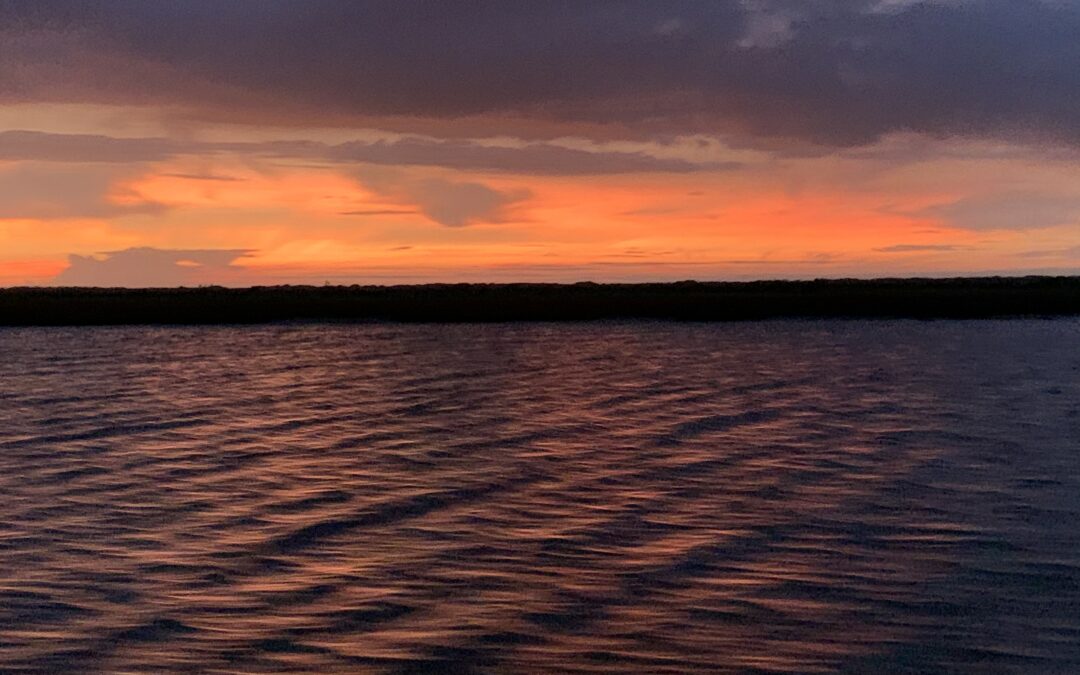Flounder gigging is one of the most rewarding and unique fishing methods along the Gulf Coast. While having the right flounder gigging gear—such as the best flounder gigging lights and quality gigs—is essential, true success depends on understanding the behavior and habits of flounder. Knowing where flounder feed, how they move with the seasons, and how they respond to changes in water conditions can dramatically increase your chances of a productive night on the water.
Feeding Patterns
Flounder are bottom-dwelling predators that rely on camouflage and patience to ambush their prey. Their primary diet consists of small fish, shrimp, crabs, and other crustaceans. These fish use their flat bodies to bury themselves in sand or mud, lying motionless until an opportunity to strike presents itself.
Feeding activity tends to peak during low-light periods such as early morning and late evening. During outgoing tides, drains are a great place to look. The bait out of the flats attracts flounder and they congregate there, making this the optimal time and place for gigging. This behavior aligns perfectly with the use of high-powered LED flounder gigging lights, which illuminates the shallow flats and edges where flounder are most likely to be active.
Migration and Seasonal Movement
Flounder exhibit clear seasonal movement patterns that can help giggers plan their trips more effectively. In the spring, flounder migrate from deeper offshore waters back into estuaries and coastal bays to feed and spawn. As temperatures rise, they spread out across shallow flats and grass beds.
The fall migration is considered the best time for gigging. As the water cools, flounder begin their movement back offshore for the winter. During this time, they concentrate in passes, channels, and nearshore flats, making them easier to locate and target. Because of this, fall is widely regarded as the peak gigging season. Preparing your boat with proper lighting now ensures you’re ready when the migration begins.
Behavioral Patterns in Shallow Waters
When flounder enter shallow environments, they tend to settle in sandy, muddy, or grassy bottoms where they can remain hidden. This natural camouflage makes them difficult to see without the right flounder gigging gear. Flounder typically lie motionless, relying on their surroundings to conceal them from predators and unsuspecting prey.
Gigging at night with the best flounder gigging lights makes it easier to detect these well-hidden fish. Look for the subtle outline of a flounder, the shape of its fins, or even the glint of its eyes reflecting in the light. Moving slowly and scanning carefully across the bottom is crucial.
Water Conditions and Tides
Water temperature and tidal movement both play significant roles in flounder activity. Ideal gigging conditions usually occur when water temperatures range between 65 and 75 degrees Fahrenheit. Cooler fall nights often create perfect conditions, drawing flounder into accessible shallow zones.
Tide cycles also influence flounder behavior. A rising tide can push baitfish into shallower areas, attracting flounder to feed. On the other hand, a falling tide can concentrate both flounder and prey along edges, cuts, and channels. Both high and low tides can be productive, depending on location and conditions, but timing your trip around active tidal movement is key.
Proper knowledge of flounder behavior, combined with reliable gear, leads to more consistent and successful gigging. Jerry’s LEDs offers specialized above-water and underwater lighting systems designed to enhance visibility, improve detection, and help you get the most out of every night on the water. Whether you’re preparing for the fall migration or targeting spring flounder on the flats, lighting your path is an essential step toward better results.
For more information on outfitting your boat with our high-performance LED gigging lights, visit jerrysleds.com

